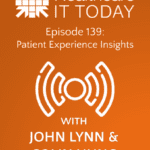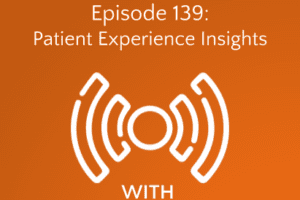As someone who contributes to a health IT publication, I get to see how a broad cross-section of the industry markets itself. This includes access to a plentiful helping of buzzwords.
These days, as most of you have seen, one of the hottest buzzwords in the health tech sphere is “patient engagement.” On the whole, this makes sense. Few would argue that the need to keep interested in their care is a pressing one.
However, it’s hard to solve a problem if you’re not sure how to define it. Until we can better specify what behaviors we’re trying to foster, what circumstances in which we’d like to foster them and how to measure the results, we’re pretty much floundering around out there.
Unfortunately, I’m not sure whether the industry has met even one of these criteria. Not only are vendors and providers using an elastic definition of the term, a passing look at academic studies also suggests that researchers aren’t agreed upon a shared definition either.
From a non-clinician’s standpoint, it seems pretty clear what patient engagement looks like – when they’re interested in and involved with their care. As a consumer, I’d measure this by some basic criteria, including whether patients:
- Return phone calls from their doctors’ office
- Bother to pick up and use their prescriptions
- Track their own condition as appropriate (e.g. by taking their blood pressure or blood glucose level)
- Took at least basic steps to understand their condition
Of course, it’s easy for me to write up an off-the-cuff definition and work from that. My job as a caregiver and chronically ill patient doesn’t require addressing many of the measures providers and the government are interested in, such as the extent to which they interact with portals.
From what I can see, though, healthcare IT vendors and providers are stretching the term to its limits and beyond. Platforms that help in transporting patients to their medical visits, tools making it easier for them to schedule appointments or software texting them medication reminders might very well foster patient engagement but does it make sense to call each of these a patient engagement solution? I would say no.
Of course, some of the fuzziness around this concept comes from vendor marketing departments, but I’d argue that this term is too weakly defined even after you factor out vendor sales sheets. There’s a whole bunch of vagueness underfoot.
I’m not making this argument strictly because I’m a picky editor who cares about how words are used for geeky reasons (although I do, indeed care about words), but rather, to suggest that if a concept is important we need to think about what it means and how it plays out carefully.
For example, when we’re talking about patient transportation, might it not be better to look at the way it alleviates problems with social determinants of health than patient engagement? If so, it calls for a different type of strategy than getting patients engaged with day to day management of their condition.
Does it really make sense to call appointment-setting enhancements “patient engagement tools?” Might it not be wiser to evaluate their benefits as part of a larger effort focused on care outcomes?
I don’t know the answers to the questions I’ve raised, but I think they’re important ones nonetheless. How about you?













